Search Result
Results for "
phospholipid synthesis
" in MedChemExpress (MCE) Product Catalog:
6
Biochemical Assay Reagents
10
Isotope-Labeled Compounds
| Cat. No. |
Product Name |
Target |
Research Areas |
Chemical Structure |
-
- HY-D1610
-
|
|
Fluorescent Dye
|
Others
|
|
BODIPY FL C5 is a green fluorescent fatty acid. BODIPY FL C5 can be used as a precursor for the synthesis of various fluorescent phospholipids. BODIPY FL C5 is relatively insensitive to the environment and fluoresces in both water-soluble and lipid environments .
|
-
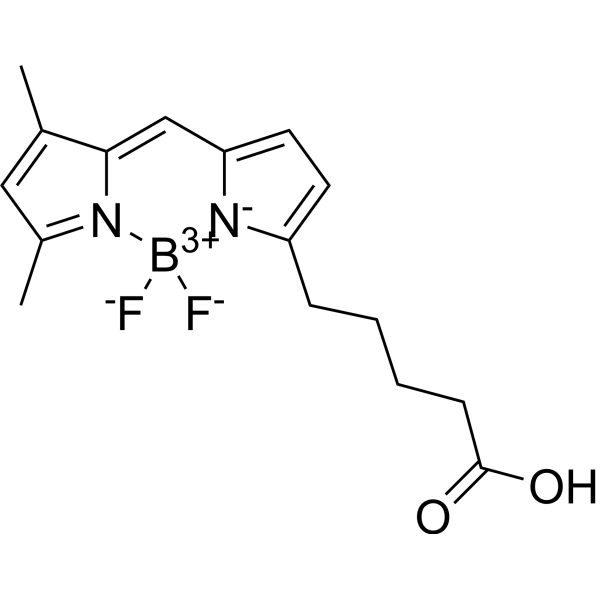
-
- HY-113400
-
|
Cytidine diphosphate
|
Endogenous Metabolite
|
Others
|
|
Cytidine 5'-diphosphate (Cytidine diphosphate) is a nucleoside diphosphate that acts as a carrier for phosphorylcholine, diacylglycerol, and other molecules during phospholipid synthesis .
|
-
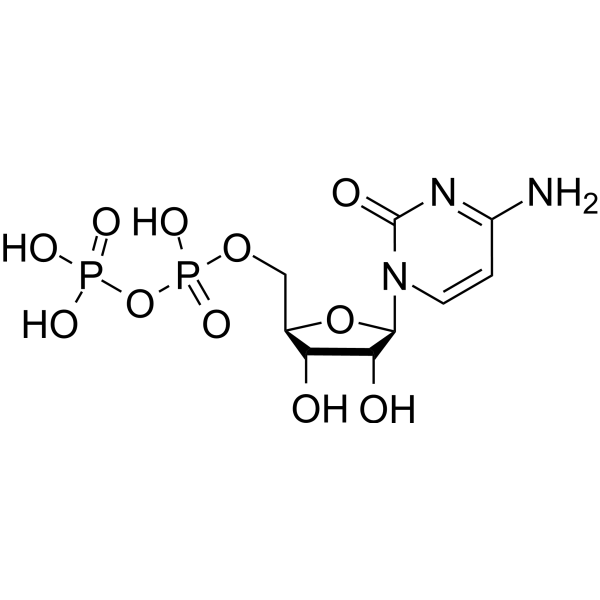
-
- HY-W008940
-
|
Cytidine diphosphate disodium
|
Endogenous Metabolite
|
Metabolic Disease
|
|
Cytidine 5'-diphosphate (Cytidine) disodium salt is a nucleoside diphosphate that acts as a carrier for phosphorylcholine, diacylglycerol, and other molecules during phospholipid synthesis .
|
-
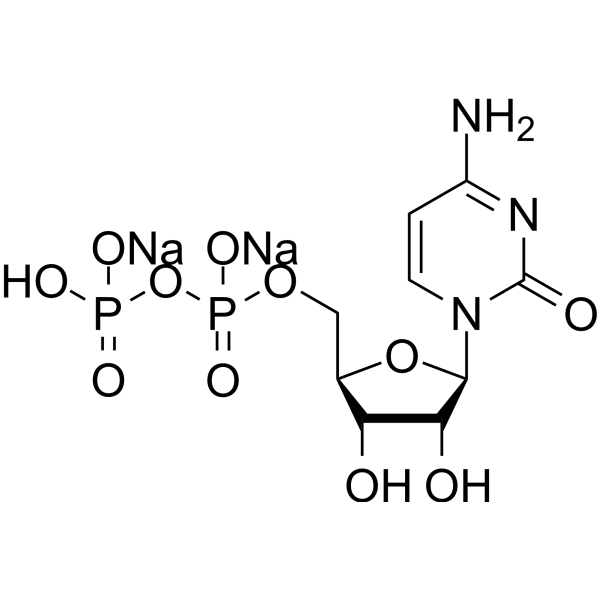
-
- HY-135130
-
|
(-)-BABX
|
Bacterial
|
Infection
|
|
Bischloroanthrabenzoxocinone is a potent Type II fatty acid synthesis (FASII) inhibitor. Bischloroanthrabenzoxocinone inhibits fatty acid synthesis. Bischloroanthrabenzoxocinone shows antibacterial activities and inhibits phospholipid, DNA, RNA, protein, and cell wall synthesis .
|
-
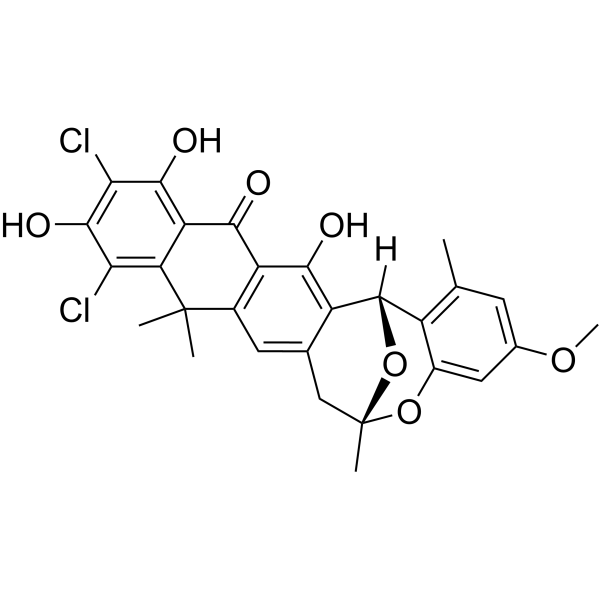
-
- HY-148601
-
|
DSPG
|
Liposome
|
Others
|
|
1,2-Distearoyl-sn-Glycero-3-Phosphatidylglycerol is an anionic phospholipid, can be used for drug delivery and the synthesis of liposomes.
|
-
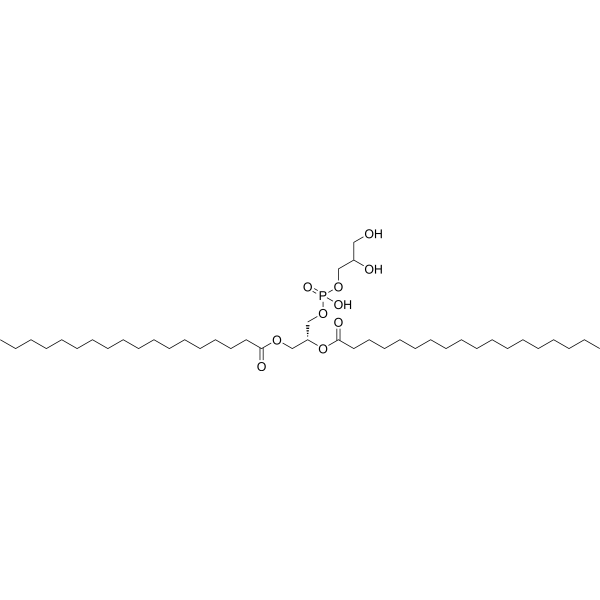
-
- HY-112307A
-
|
|
Liposome
|
Others
|
|
(Rac)-1,2-Distearoyl-sn-Glycero-3-Phosphatidylglycerol (sodium) is an anionic phospholipid, can be used for drug delivery and the synthesis of liposomes .
|
-
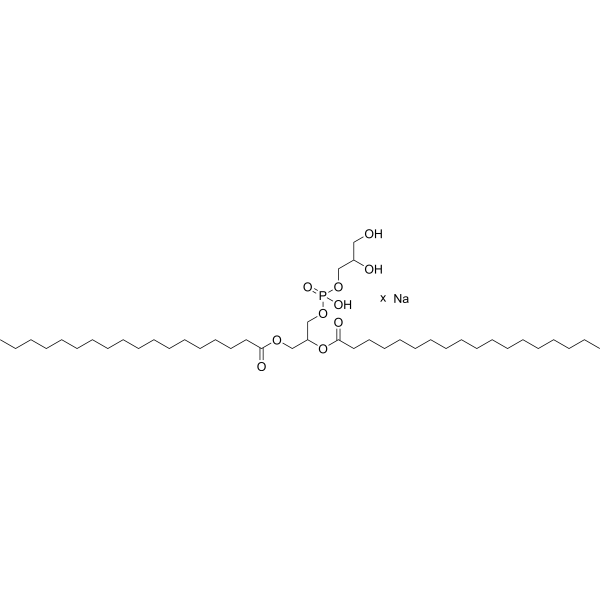
-
- HY-125924
-
|
DSPE-PEG-NH2, MW 2000 ammonium
|
Liposome
|
Others
|
|
DSPE-PEG-Amine, MW 2000 (ammonium), an amine derivative of phospholipid poly ethylene glycol, is used in the synthesis of solid lipid and thermosensitive liposomal nanoparticles for the delivery of anticancer agents .
|
-
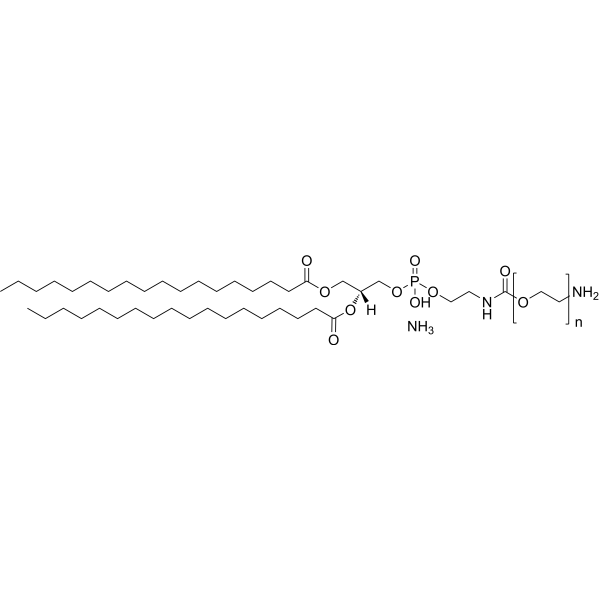
-
- HY-B0158
-
|
Cytosine β-D-riboside; Cytosine-1-β-D-ribofuranoside
|
Nucleoside Antimetabolite/Analog
Endogenous Metabolite
|
Neurological Disease
|
|
Cytidine is a pyrimidine nucleoside and acts as a component of RNA. Cytidine is a precursor of uridine. Cytidine controls neuronal-glial glutamate cycling, affecting cerebral phospholipid metabolism, catecholamine synthesis, and mitochondrial function .
|
-
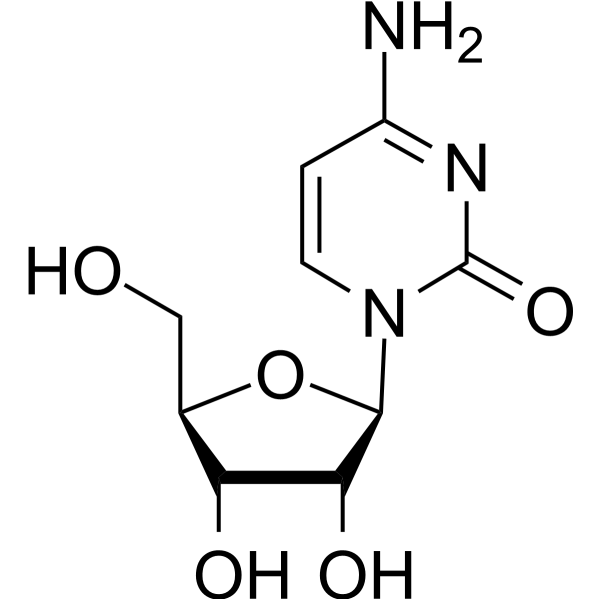
-
- HY-142978
-
|
DSPE-mPEG2000; 1,2-Distearoyl-sn-glycero-3-phosphoethanolamine-N-[methoxy(polyethylene glycol)-2000]
|
Liposome
|
Cancer
|
|
18:0 mPEG2000 PE (DSPE-mPEG2000) is a PEG-based phospholipid. 18:0 mPEG2000 PE can be used to synthesis liposomes for delivering cancer agents .
|
-

-
- HY-113400S3
-
|
|
Isotope-Labeled Compounds
Endogenous Metabolite
|
Others
|
|
Cytidine diphosphate-d13 dilithium is deuterium labeled Cytidine diphosphate (HY-113400). Cytidine diphosphate is a nucleoside diphosphate that acts as a carrier for phosphorylcholine, diacylglycerol, and other molecules during phospholipid synthesis.
|
-

-
- HY-113400S
-
|
|
Isotope-Labeled Compounds
Endogenous Metabolite
|
Others
|
|
Cytidine diphosphate- 15N3 dilithium is 15N labeled Cytidine diphosphate (HY-113400). Cytidine diphosphate is a nucleoside diphosphate that acts as a carrier for phosphorylcholine, diacylglycerol, and other molecules during phospholipid synthesis.
|
-
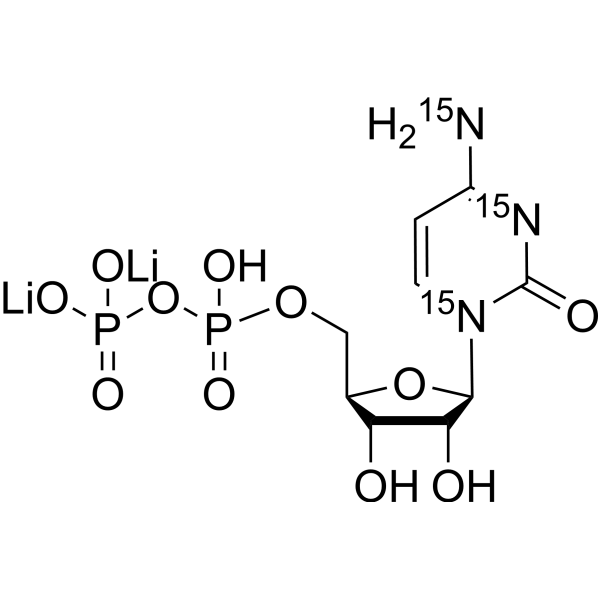
-
- HY-113400S1
-
|
|
Isotope-Labeled Compounds
Endogenous Metabolite
|
Others
|
|
Cytidine diphosphate- 13C9 dilithium is 13C-labeled Cytidine diphosphate (HY-113400). Cytidine diphosphate is a nucleoside diphosphate that acts as a carrier for phosphorylcholine, diacylglycerol, and other molecules during phospholipid synthesis.
|
-
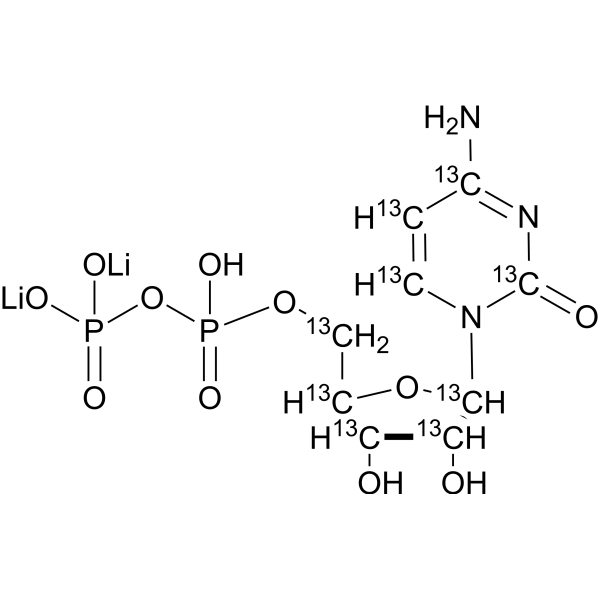
-
- HY-148165
-
-
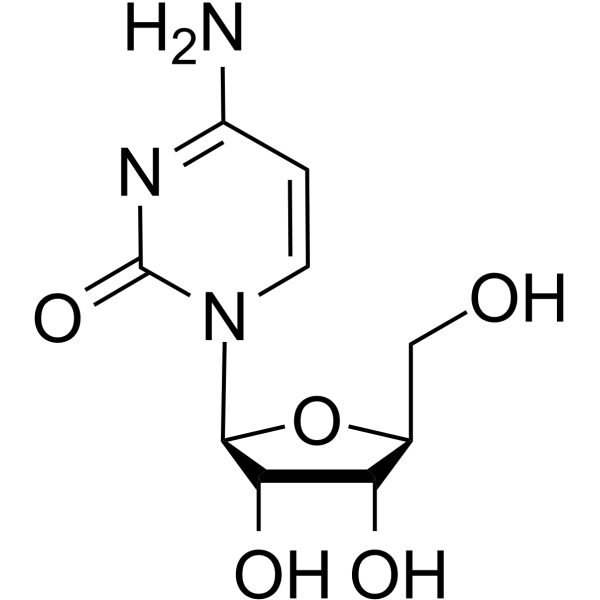
-
- HY-113400S2
-
|
|
Isotope-Labeled Compounds
Endogenous Metabolite
|
Others
|
|
Cytidine diphosphate- 13C9, 15N3 dilithium is 13C and 15N-labeled Cytidine diphosphate (HY-113400). Cytidine diphosphate is a nucleoside diphosphate that acts as a carrier for phosphorylcholine, diacylglycerol, and other molecules during phospholipid synthesis.
|
-
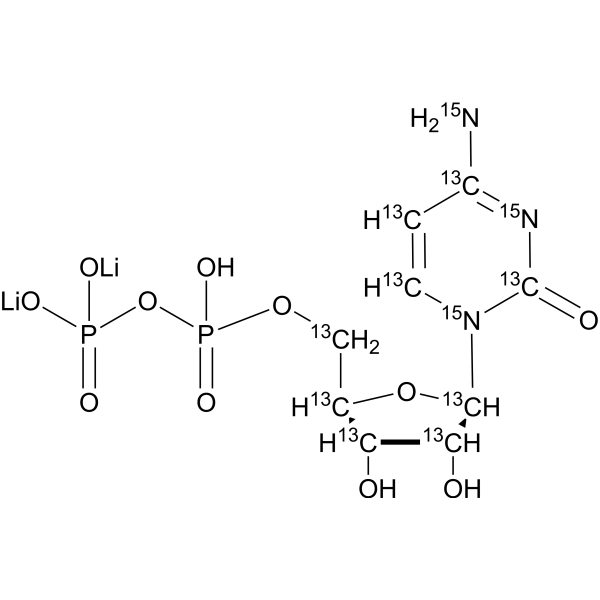
-
- HY-B0158S
-
|
Cytosine β-D-riboside-d2; Cytosine-1-β-D-ribofuranoside-d2
|
Nucleoside Antimetabolite/Analog
Endogenous Metabolite
|
Neurological Disease
|
|
Cytidine-d2 is the deuterium labeled Cytidine. Cytidine is a pyrimidine nucleoside and acts as a component of RNA. Cytidine is a precursor of uridine. Cytidine controls neuronal-glial glutamate cycling, affecting cerebral phospholipid metabolism, catecholamine synthesis, and mitochondrial function[1][2][3].
|
-

-
- HY-B0158S6
-
|
Cytosine β-D-riboside-15N3; Cytosine-1-β-D-ribofuranoside-15N3
|
Nucleoside Antimetabolite/Analog
Endogenous Metabolite
|
Neurological Disease
|
|
Cytidine- 15N3 is the 15N labeled Cytidine[1]. Cytidine is a pyrimidine nucleoside and acts as a component of RNA. Cytidine is a precursor of uridine. Cytidine controls neuronal-glial glutamate cycling, affecting cerebral phospholipid metabolism, catecholamine synthesis, and mitochondrial function[2][3][4].
|
-

-
- HY-112747
-
|
LPI; PE (soy)
|
Phospholipase
|
Infection
|
|
Phosphatidylethanolamine is the most abundant phospholipid in prokaryotes and the second most abundant found in the membrane of mammalian, plant, and yeast cells, comprising approximately 25% of total mammalian phospholipids. In the brain, phosphatidylethanolamine comprises almost half of the total phospholipids. It is synthesized mainly through the cytidine diphosphate-ethanolamine and phosphatidylserine decarboxylation pathways, which occur in the endoplasmic reticulum (ER) and mitochondrial membranes, respectively. It is a precursor in the synthesis of phosphatidylcholine and arachidonoyl ethanolamide and is a source of ethanolamine used in various cellular functions. In E. coli, phosphatidylethanolamine deficiency prevents proper assembly of lactose permease, suggesting a role as a lipid chaperone. It is a cofactor in the propagation of prions in vitro and can convert recombinant mammalian proteins into infectious molecules even in the absence of RNA. This product contains phosphatidylethanolamine molecular species with variable fatty acyl chain lengths at the sn-1 and sn-2 positions.
|
-

-
- HY-150220
-
|
|
Liposome
|
Others
|
|
1,5-Dihexadecyl N-(3-carboxy-1-oxopropyl)-L-glutamate is a lipid. 1,5-Dihexadecyl N-(3-carboxy-1-oxopropyl)-L-glutamate can be used for the synthesis of phospholipid vesicle and improve the encapsulation efficiency of proteins .
|
-

-
- HY-B0158S5
-
|
Cytosine β-D-riboside-13C9,15N3; Cytosine-1-β-D-ribofuranoside-13C9,15N3
|
Nucleoside Antimetabolite/Analog
Endogenous Metabolite
|
Neurological Disease
|
|
Cytidine- 13C9, 15N3 is the 13C and 15N labeled Cytidine[1]. Cytidine is a pyrimidine nucleoside and acts as a component of RNA. Cytidine is a precursor of uridine. Cytidine controls neuronal-glial glutamate cycling, affecting cerebral phospholipid metabolism, catecholamine synthesis, and mitochondrial function[2][3][4].
|
-

-
- HY-107614
-
|
1-Oleoyl-sn-glycero-3-phosphate sodium; 1-Oleoyl-LPA sodium
|
LPL Receptor
|
Neurological Disease
|
|
1-Oleoyl lysophosphatidic acid (1-Oleoyl-sn-glycero-3-phosphate) sodium, a potent bioactive phospholipid, is a LPA receptor activator. 1-Oleoyl lysophosphatidic acid sodium can promote mitosis by inducing DNA synthesis. 1-Oleoyl lysophosphatidic acid sodium is also involved in normal and pathological emotional responses, including anxiety and depression .
|
-
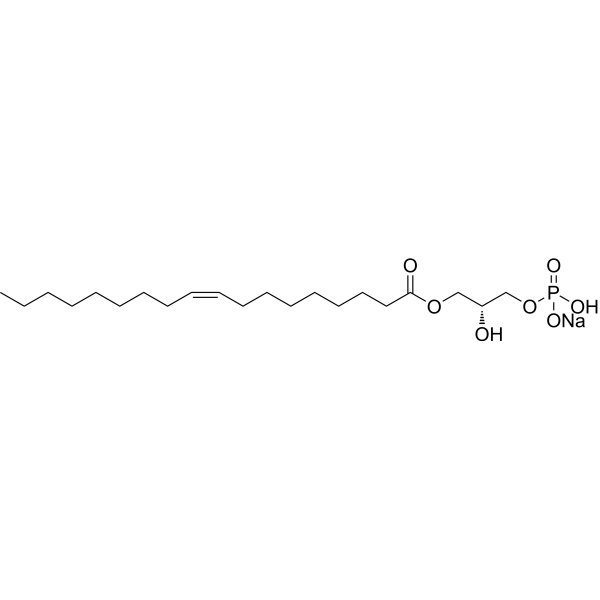
-
- HY-B0158S8
-
|
Cytosine β-D-riboside-d13; Cytosine-1-β-D-ribofuranoside-d13
|
Nucleoside Antimetabolite/Analog
Endogenous Metabolite
Isotope-Labeled Compounds
|
Neurological Disease
|
|
Cytidine-d13 (Cytosine β-D-riboside-d13; Cytosine-1-β-D-ribofuranoside-d13) is deuterium labeled Cytidine (HY-B0158). Cytidine is a pyrimidine nucleoside and acts as a component of RNA. Cytidine is a precursor of uridine. Cytidine controls neuronal-glial glutamate cycling, affecting cerebral phospholipid metabolism, catecholamine synthesis, and mitochondrial function .
|
-

-
- HY-B0158S7
-
|
Cytosine β-D-riboside-13C9; Cytosine-1-β-D-ribofuranoside-13C9
|
Nucleoside Antimetabolite/Analog
Endogenous Metabolite
Isotope-Labeled Compounds
|
Neurological Disease
|
|
Cytidine- 13C9 (Cytosine β-D-riboside- 13C9; Cytosine-1-β-D-ribofuranoside- 13C9) is 13C labeled Cytidine (HY-B0158). Cytidine is a pyrimidine nucleoside and acts as a component of RNA. Cytidine is a precursor of uridine. Cytidine controls neuronal-glial glutamate cycling, affecting cerebral phospholipid metabolism, catecholamine synthesis, and mitochondrial function .
|
-

-
- HY-N7833
-
|
Heneicosapentaenoic acid
|
Biochemical Assay Reagents
|
Others
|
|
Heneicosapentaenoic Acid (HPA) is a 21:5 omega-3 fatty acid found in trace amounts in the green alga B. pennata and in fish oils. Its chemical composition is similar to eicosapentaenoic acid (EPA), except that a carbon is extended at the carboxy terminus, placing the first double bond at the δ6 position. HPA can be used to study the importance of double bond position in omega-3 fatty acids. It incorporates phospholipids and triacylglycerols in vivo with the same efficiency as EPA and docosahexaenoic acid, and exhibits a strong inhibitory effect on the synthesis of arachidonic acid from linoleic acid. HPA is a poor substrate for prostaglandin H synthase (PGHS) (cyclooxygenase) and 5-lipoxygenase, but retains the ability to rapidly inactivate PGHS.
|
-
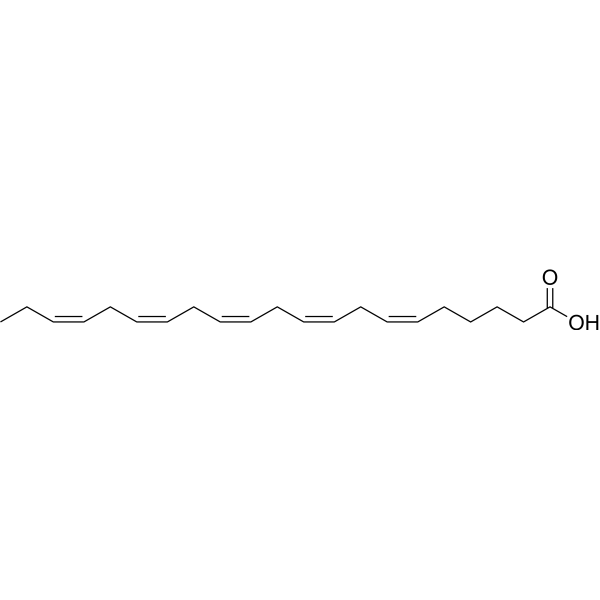
-
- HY-N6792S
-
|
T-2 Mycotoxin-13C24
|
Isotope-Labeled Compounds
|
Metabolic Disease
|
|
T-2 Toxin- 13C24 (T-2 Mycotoxin- 13C24) is 13C-labeled T-2 Toxin (HY-N6792). T-2 Toxin (T-2 Mycotoxin) is a toxic trichothecene mycotoxin produced by various Fusarium species in feedstuffs and cereal grains. T-2 Toxin (T-2 Mycotoxin) inhibits the synthesis of DNA and RNA, interferes with the metabolism of membrane phospholipids, and increases the level of liver lipid peroxides. T-2 Toxin (T-2 Mycotoxin) induces apoptosis in the immune system, gastrointestinal tissues, and fetal tissues .
|
-

-
- HY-N6792
-
|
T-2 Mycotoxin
|
Apoptosis
DNA/RNA Synthesis
|
Metabolic Disease
|
|
T-2 Toxin (T-2 Mycotoxin) is a toxic trichothecene mycotoxin produced by various Fusarium species in feedstuffs and cereal grains, LD50 values of T-2 Toxin in mice and rats are 5.2 and 1.5 mg/kg BW a,respectively . T-2 Toxin (T-2 Mycotoxin) can be transformed into a variety of metabolite, the typical metabolites of T-2 toxin in animals are HT-2 toxin and T-2-triol, which are hydrolysates . T-2 Toxin (T-2 Mycotoxin) is an inhibitor of protein synthesis resulting from binding peptidyltransferase, which is an integral part of the 60s ribosomal subunit. T-2 Toxin (T-2 Mycotoxin) inhibits the synthesis of DNA and RNA, interferes with the metabolism of membrane phospholipids, and increases the level of liver lipid peroxides . T-2 Toxin (T-2 Mycotoxin) induces apoptosis in the immune system, gastrointestinal tissues, and fetal tissues .
|
-

| Cat. No. |
Product Name |
Type |
-
- HY-D1610
-
|
|
Dyes
|
|
BODIPY FL C5 is a green fluorescent fatty acid. BODIPY FL C5 can be used as a precursor for the synthesis of various fluorescent phospholipids. BODIPY FL C5 is relatively insensitive to the environment and fluoresces in both water-soluble and lipid environments .
|
| Cat. No. |
Product Name |
Type |
-
- HY-112307A
-
|
|
Drug Delivery
|
|
(Rac)-1,2-Distearoyl-sn-Glycero-3-Phosphatidylglycerol (sodium) is an anionic phospholipid, can be used for drug delivery and the synthesis of liposomes .
|
-
- HY-125924
-
|
DSPE-PEG-NH2, MW 2000 ammonium
|
Drug Delivery
|
|
DSPE-PEG-Amine, MW 2000 (ammonium), an amine derivative of phospholipid poly ethylene glycol, is used in the synthesis of solid lipid and thermosensitive liposomal nanoparticles for the delivery of anticancer agents .
|
-
- HY-150220
-
|
|
Drug Delivery
|
|
1,5-Dihexadecyl N-(3-carboxy-1-oxopropyl)-L-glutamate is a lipid. 1,5-Dihexadecyl N-(3-carboxy-1-oxopropyl)-L-glutamate can be used for the synthesis of phospholipid vesicle and improve the encapsulation efficiency of proteins .
|
-
- HY-148601
-
|
DSPG
|
Drug Delivery
|
|
1,2-Distearoyl-sn-Glycero-3-Phosphatidylglycerol is an anionic phospholipid, can be used for drug delivery and the synthesis of liposomes.
|
-
- HY-142978
-
|
DSPE-mPEG2000; 1,2-Distearoyl-sn-glycero-3-phosphoethanolamine-N-[methoxy(polyethylene glycol)-2000]
|
Drug Delivery
|
|
18:0 mPEG2000 PE (DSPE-mPEG2000) is a PEG-based phospholipid. 18:0 mPEG2000 PE can be used to synthesis liposomes for delivering cancer agents .
|
-
- HY-N7833
-
|
Heneicosapentaenoic acid
|
Biochemical Assay Reagents
|
|
Heneicosapentaenoic Acid (HPA) is a 21:5 omega-3 fatty acid found in trace amounts in the green alga B. pennata and in fish oils. Its chemical composition is similar to eicosapentaenoic acid (EPA), except that a carbon is extended at the carboxy terminus, placing the first double bond at the δ6 position. HPA can be used to study the importance of double bond position in omega-3 fatty acids. It incorporates phospholipids and triacylglycerols in vivo with the same efficiency as EPA and docosahexaenoic acid, and exhibits a strong inhibitory effect on the synthesis of arachidonic acid from linoleic acid. HPA is a poor substrate for prostaglandin H synthase (PGHS) (cyclooxygenase) and 5-lipoxygenase, but retains the ability to rapidly inactivate PGHS.
|
| Cat. No. |
Product Name |
Category |
Target |
Chemical Structure |
| Cat. No. |
Product Name |
Chemical Structure |
-
- HY-B0158S
-
|
|
|
Cytidine-d2 is the deuterium labeled Cytidine. Cytidine is a pyrimidine nucleoside and acts as a component of RNA. Cytidine is a precursor of uridine. Cytidine controls neuronal-glial glutamate cycling, affecting cerebral phospholipid metabolism, catecholamine synthesis, and mitochondrial function[1][2][3].
|
-

-
- HY-113400S3
-
|
|
|
Cytidine diphosphate-d13 dilithium is deuterium labeled Cytidine diphosphate (HY-113400). Cytidine diphosphate is a nucleoside diphosphate that acts as a carrier for phosphorylcholine, diacylglycerol, and other molecules during phospholipid synthesis.
|
-

-
- HY-113400S
-
|
|
|
Cytidine diphosphate- 15N3 dilithium is 15N labeled Cytidine diphosphate (HY-113400). Cytidine diphosphate is a nucleoside diphosphate that acts as a carrier for phosphorylcholine, diacylglycerol, and other molecules during phospholipid synthesis.
|
-

-
- HY-113400S1
-
|
|
|
Cytidine diphosphate- 13C9 dilithium is 13C-labeled Cytidine diphosphate (HY-113400). Cytidine diphosphate is a nucleoside diphosphate that acts as a carrier for phosphorylcholine, diacylglycerol, and other molecules during phospholipid synthesis.
|
-

-
- HY-113400S2
-
|
|
|
Cytidine diphosphate- 13C9, 15N3 dilithium is 13C and 15N-labeled Cytidine diphosphate (HY-113400). Cytidine diphosphate is a nucleoside diphosphate that acts as a carrier for phosphorylcholine, diacylglycerol, and other molecules during phospholipid synthesis.
|
-

-
- HY-B0158S6
-
|
|
|
Cytidine- 15N3 is the 15N labeled Cytidine[1]. Cytidine is a pyrimidine nucleoside and acts as a component of RNA. Cytidine is a precursor of uridine. Cytidine controls neuronal-glial glutamate cycling, affecting cerebral phospholipid metabolism, catecholamine synthesis, and mitochondrial function[2][3][4].
|
-

-
- HY-B0158S5
-
|
|
|
Cytidine- 13C9, 15N3 is the 13C and 15N labeled Cytidine[1]. Cytidine is a pyrimidine nucleoside and acts as a component of RNA. Cytidine is a precursor of uridine. Cytidine controls neuronal-glial glutamate cycling, affecting cerebral phospholipid metabolism, catecholamine synthesis, and mitochondrial function[2][3][4].
|
-

-
- HY-B0158S8
-
|
|
|
Cytidine-d13 (Cytosine β-D-riboside-d13; Cytosine-1-β-D-ribofuranoside-d13) is deuterium labeled Cytidine (HY-B0158). Cytidine is a pyrimidine nucleoside and acts as a component of RNA. Cytidine is a precursor of uridine. Cytidine controls neuronal-glial glutamate cycling, affecting cerebral phospholipid metabolism, catecholamine synthesis, and mitochondrial function .
|
-

-
- HY-B0158S7
-
|
|
|
Cytidine- 13C9 (Cytosine β-D-riboside- 13C9; Cytosine-1-β-D-ribofuranoside- 13C9) is 13C labeled Cytidine (HY-B0158). Cytidine is a pyrimidine nucleoside and acts as a component of RNA. Cytidine is a precursor of uridine. Cytidine controls neuronal-glial glutamate cycling, affecting cerebral phospholipid metabolism, catecholamine synthesis, and mitochondrial function .
|
-

-
- HY-N6792S
-
|
|
|
T-2 Toxin- 13C24 (T-2 Mycotoxin- 13C24) is 13C-labeled T-2 Toxin (HY-N6792). T-2 Toxin (T-2 Mycotoxin) is a toxic trichothecene mycotoxin produced by various Fusarium species in feedstuffs and cereal grains. T-2 Toxin (T-2 Mycotoxin) inhibits the synthesis of DNA and RNA, interferes with the metabolism of membrane phospholipids, and increases the level of liver lipid peroxides. T-2 Toxin (T-2 Mycotoxin) induces apoptosis in the immune system, gastrointestinal tissues, and fetal tissues .
|
-

Your information is safe with us. * Required Fields.
Inquiry Information
- Product Name:
- Cat. No.:
- Quantity:
- MCE Japan Authorized Agent:


































